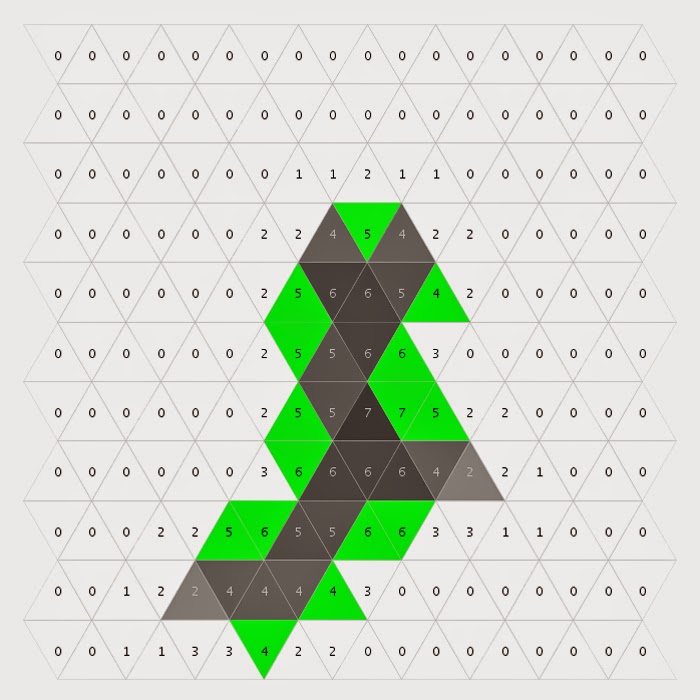Here are more from the same series, this time all at 60 cells and although functionally the same they are shown without labelling any counts or highlighting gaps so that the form can be read more clearly.
The first series is as before allowing growth to any neighbour with a shared edge or corner.
Set of max neighbourcount = 6:
Set of max neighbourcount = 5:
Set of max neighbourcount = 4:
Set of max neighbourcount = 3:
The second series is again using highest counts of neighbours with shared edges to determine growth, to keep forms contiguous. Growth is still restricted by varying max counts of all 12 neighbours.
Set of max neighbourcount = 8:
Set of max neighbourcount = 7:
Set of max neighbourcount = 6:
Set of max neighbourcount = 5:
Set of max neighbourcount = 4:
For comparison, the set of no max neighbourcount (max neighbourcount = 12):
I am happy with the variety of contrasting and interesting forms controlled with restriction of growth.
Varying max neighbour count for diverging form
The following series show growth to cells of highest neighbourcount, exploring restriction by varying the max neighbourcount. Highlighting indicates blocked cells where the max neighbourcount has been reached. Note that counts can exceed the max following subsequent growth in adjacent cells.
Growth is recorded at 5 cells, 10 cells, 20 cells and 60 cells.
Sequence of max neighbourcount = 5:
Sequence of max neighbourcount = 4:
Sequence of max neighbourcount = 3:
The next series are now using highest counts of neighbours with shared edges to determine growth, to keep forms contiguous. Growth is still restricted by varying max counts of all 12 neighbours.
Sequence of max neighbourcount = 6:
Sequence of max neighbourcount = 5:
Sequence of max neighbourcount = 4:
Growth is recorded at 5 cells, 10 cells, 20 cells and 60 cells.
Sequence of max neighbourcount = 5:
Sequence of max neighbourcount = 4:
The next series are now using highest counts of neighbours with shared edges to determine growth, to keep forms contiguous. Growth is still restricted by varying max counts of all 12 neighbours.
Sequence of max neighbourcount = 6:
Sequence of max neighbourcount = 5:
Sequence of max neighbourcount = 4:
Subscribe to:
Posts (Atom)
































































